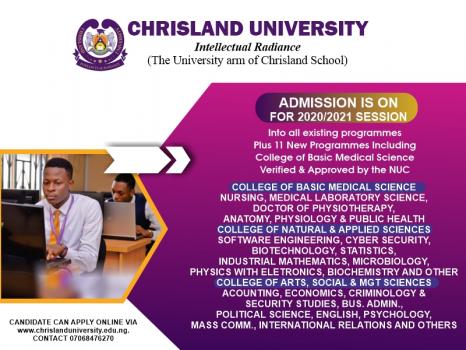
If the challenges and unresolved hitches that trailed ongoing distribution of the Permanent Voters’ Card (PVC) by the Independent National Electoral Commission (INEC) are anything to go by, having credible general elections in less than six months time may be a tall dream.
The matter is worsened by the wind of insurgency and insecurity blowing across the North eastern parts of the country, a region that has over 12 million voters.
By Clifford Ndujihe
Without the PVC a prospective voter will not be allowed to vote at the elections, the INEC has said.
Last May, the INEC began the distribution of the permanent voters’ card. The first phase of the distribution took place in 10 states, namely: Akwa Ibom, Bayelsa, Enugu, Abia, Benue, Kogi, Zamfara, Kebbi, Taraba and Gombe. The exercise lasted for three days- May 23 to 25.
The second phase began in 11 states on Friday, August 15 and ended on Sunday, August 17. The states are Bauchi and Yobe, (North East); Jigawa and Sokoto (North-west); FCT and Kwara (North-central); Ebonyi and Anambra (South-east); Ondo and Oyo (South-west); Delta and Cross River (South-south).
Thus, 15 states are yet to benefit from the exercise. Even among the benefitting states, most would-be voters are yet to get the prized document. A deluge of criticisms trailed the exercise. Many people could not find their names in the voters register. Some had to travel long distances to their polling units and yet could not get the card. Some who found their names in the register had the problem of their PVC not being available.
The challenges
Many stakeholders are afraid that using the PVC for the elections may disenfranchise would-be-voters.
Reason: INEC may not complete the distribution of the cards before the elections. About 73 million voters are expected to get the cards. The INEC’s Technical Committee had approved the printing of 40 million cards for the first phase at the cost of about N2.6 billion.
The electoral commission claimed that the first phase of the exercise was successful. Mr. Kayode Idowu, chief press secretary to INEC Chairman, Professor Attahiru Jega, reportedly said 71 per cent of those targeted in the first phase got the cards and promised that the commission would improve on the success in subsequent exercises.
Idowu’s views were not shared by other stakeholders such as the political parties, civil society organisations and the citizenry, who claimed that getting the cards was cumbersome. Some of them said apart from their names not being on the register, the INEC appeared to be hoarding cards. If those who had not relocated could not get their cards from their polling units what about those, who had relocated from one state to the other or even towns?
The INEC expects those who are 18 and above and could not take part in the 2011 voters registration exercise to do so now. Incidentally, the five days the commission allowed for registration have been described as too short especially given that logistics problems trailed the exercise in the 21 states it has been held so far.
Before the distribution of the PVC, the INEC gave guidelines for easy collection of the cards. In spite of the guidelines an avalanche of hitches dotted the exercise. There were complaints that INEC officials did not report for the distribution in designated centres.
Confirming these complaints and challenges, the International Society for Civil Liberties & the Rule of Law, in a statement by Emeka Umeagbalasi (board Chairman), Uzochukwu Oguejiofor (head, Campaign & Publicity Department) and Chiugo Onyekachi Onwuatuegwu (head, Democracy and Good Governance Programme) said: “Borrowing from previous exercises such as the ones conducted in Anambra State in 2013, INEC has mountainous challenges ranging from administrative to personnel and machines. Administratively, the Apex Electoral Commission must lower its stringent conditions imposed on the target audience (registered voters and unregistered eligible voters).
“For instance, asking those that lost their voters cards to obtain ‘police extract or court affidavit’ or both, etc can be very frustrating and has the capacity of discouraging them from obtaining their legitimate voters cards. Another area is the issue of limiting the Continuous Voters Registration, CVR exercise to electoral wards/collation centres only.
“This will deny hundreds of thousands, if not millions of unregistered eligible voters the opportunity of being captured in the exercise under reference owing to far distances and other artificial bottle necks.
In Anambra State, for instance, rural dwellers will have to travel about five kilometers or more to locate their wards/collation centres usually located at LGA headquarters or conspicuous community facilities. This is totally cumbersome.
“Also the three days mapped out by the Commission for the PVC exercise is grossly inadequate.”
The post polling unit continued distribution of PVCs arrangement proposed by the Commission is not enough remedy.
The Commission should not only extend the time for the PVCs and CVR exercises but also create more centres across the country for CVR exercise.
“The issue of “missing names” occasioned by the Commission’s administrative incompetence has become a recurring decimal in the country. INEC’s ICT and pen and paper (POP) data management is still very poor.
This has brought about a series of complaints ranging from missing names to erasure of pictures and other data of registered voters who successfully completed their ‘voters’ card transfer.’ The watery allegation of double or multiple voter registration leveled against Mr. Willie Obiano, who is now the Governor of Anambra State, is a clear case in point.
The failure of INEC in this respect is a clear violation of Section 13 (4) of the Electoral Act of 2010. The supplementary Section requires the ‘transferring and receiving INEC officials’ to ensure that the previous data of a successful voter’s card transferee is clearly deleted from the Commission’s data bank containing the successful applicant’s previous data.”
Get your cards by December or forget polls –INEC
Reacting to these complaints, the INEC said it was making efforts to address them and urged would be voters to ensure they get their cards before December 2014 if they want to vote in the 2015 polls.
The Director of Voter Registry in INEC, Emmanuel Akem gave the assurance during a one-day Town Hall meeting on the continuous voter registration and distribution of Permanent Voters Cards, on Monday.
Akem, who said that the observations and complaints by prospective voters were being addressed, assured that voters that just registered would have their PVCs in 30 days
His words: “All potential voters must have collected their PVCs before December 2014, those that did not collect theirs will not vote in 2015. We had technical support deployed to the field to deal with the breakdown of machines during registration. This, among other measures, is being taken for the success of the exercise.”
Akem stated that although the CVR had not commenced in the local governments, they would start the exercise as soon as the three phases of the exercise were concluded across the country.
Permanent Voters Card
How to collect PVC
How to collect PVC
The distribution officer:
*Takes custody of the PVC cards
*Pastes the register of voters for display at the Polling Unit (PU) and makes sure it is on display for the period of the distribution.
*Checks and confirms that the prospective voter is in the distribution register of voters.
*If the name of the prospective voter is found on the distribution register of voters, he/she shall search through the PVC cards for his/her PVC.
*Requests prospective voter to thumbprint and sign the PVC collection section of the distribution register of voters.
*Retrieves the TVC from the prospective voter and hands over to prospective voter his/her PVC.
*Where the prospective voter does not have a TVC, the prospective voter is made to sign an attestation form and affix his/her passport photograph.
*If the prospective voter is suspected to be under-age, his/her PVC shall be retained at the LGA office.
Features of the PVC
*Smart card -based Voter ID;
*Stores voter’s information such as bio-data, biometrics and facial image;
*The card technology provides adequate security features to reduce vulnerability to counterfeiting
*The PVC shall be used for identification and authentication of voters during elections
Who is eligible to collect PVC?
A person is eligible to collect PVC if he/she:
*Has registered before
*Is in the register of voters displayed
*Has a temporary voter card (TVC)
*Has lost his/her TVC but his/her identity can be confirmed.
*Is physically present at the collection centre because there shall be no collection of PVC by proxy.
Where to collect PVC
*PVC distribution will be at the Polling Unit.
*Those who are unable to collect their PVC during the specified period (8am to 4 pm at the PU) shall, therefore, collect theirs from the INEC office in the LGA
Why INEC introduced card
The electoral umpire said it would use the permanent voters’ card for the 2015 elections to guard against the challenges that trailed previous elections in Nigeria.
The INEC Commissioner for Operations, Mr Nuhu Yakubu, said recently that the card will ensure free, fair and credible elections in 2015. How?
The card has anti-rigging features because it is a smart card, similar to a credit card which has a chip imbedded in it.
The chip captures one’s biometrics and data like finger print, photograph, address, photograph and telephone number, among others. “It transmits signal. That is the kind of card that the commission is going to use during 2015 elections,” he said.
In like manner, INEC’s Director of Information and Communication Technology Mr. Chidi Nwafor, said that the introduction of PVCs would make the elections credible. He said the cards would erase the problems of identification and authentication.






















